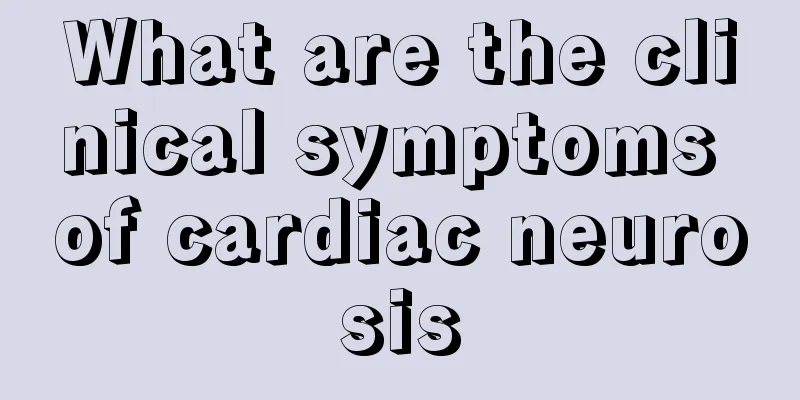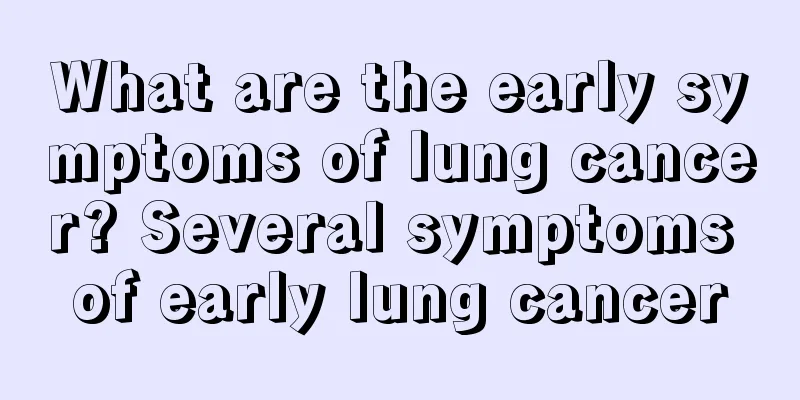What are the clinical symptoms of cardiac neurosis

|
Nowadays, some heart diseases can be said to be very common. After all, people are under great psychological pressure now. Cardiac neurosis may be familiar to many people and they often hear about it, but how many people know about this disease? Here we will introduce the symptoms of this disease to you so that you can discover and treat it as soon as possible. 1. Heart palpitations The most common symptoms are conscious heartbeat, precordial pulsation and discomfort, which are more obvious during exercise or emotional excitement. These are purely subjective feelings of the patient, and no objective examination has found anything. However, sometimes a strong apical beat or sinus tachycardia can be seen, occasionally atrial or ventricular premature contractions or brief paroxysmal supraventricular tachycardia. Mild activity can cause the heart rate to increase significantly and disproportionately, and patients often dare not move because of this. 2. Precordial pain They think it is angina pectoris, but its location and nature are different from typical angina pectoris. The pain site is variable and not fixed, mostly limited to the apex of the heart and a very small area under the left breast. It can also be under the sternum, on the right chest, or on the chest and back. The pain may be a stabbing or knife-like pain lasting for a few seconds, or a mild dull pain that lasts for hours or days. Sometimes the pain radiates to the outer side of the left forearm or fingers. The pain is not related to exertion and only occurs after activity, mental fatigue, or even at rest. Some patients can relieve the pain by pressing the painful area with their hands or lying on their left side. Other patients are extremely nervous and dare not change their body position, or have tender points in the ribs, soft tissues and surface skin in the precordial area. 3. Difficulty breathing Patients often feel a lack of air, difficulty breathing, shallow and irregular breathing, accompanied by chest pain. Attacks are more likely to occur in crowded or poorly ventilated places. They often feel comfortable after sighing or breathing through a window to breathe fresh air. However, deep breathing for a long time may cause symptoms such as numbness of the limbs, dizziness, vertigo, tremors and even convulsions of the hands and feet, which is the so-called hyperventilation syndrome. 4. Symptoms of neurasthenia Patients often complain of fatigue, dizziness, headache, flushed and burning sensation in the face, insomnia, nightmares, anxiety, irritability, loss of appetite, nausea and vomiting, unlocalized muscle twitching, sweating in the armpits and palms, numbness in the hands and feet, etc. |
<<: What is the reason for sweating when eating?
>>: Why do I often suffer from sleep paralysis?
Recommend
What's wrong with sore eyes
With the rapid development of science and technol...
What can be eaten with mustard
The simplest way to eat mustard is to add some so...
Postmenopausal women should be alert to endometrial cancer when vaginal bleeding occurs
"Endometrial cancer is one of the common mal...
What vegetables are good for gallstones
It is said that this is an era of advanced techno...
Does kelp contain high potassium?
The human body often lacks some trace elements, s...
Heart rate when sitting and standing
Our physical health is determined by many factors...
Why does tea produce foam when it is brewed?
Drinking tea is a hobby of many people. Drinking ...
There are many benefits of “Cat Style” for health preservation
In order to maintain health and wellness, modern ...
What are the signs of liver cancer in men
The early symptoms of male liver cancer patients ...
How about Honeycomb Picosecond
Some people may think of food first when they see...
Is pneumonia with fever serious?
Generally, fever often causes many complications,...
How are pore blackheads formed
Although everyone wants their skin to be smooth a...
Surgical treatment of teratoma is the first choice
There are many different surgical procedures for ...
What are the effects of regulating meridians?
In traditional Chinese medicine theory, the human...
What are the symptoms of diffuse liver cancer? What can we do to prevent diffuse liver cancer from spreading?
Many liver cancer patients are found in the middl...









